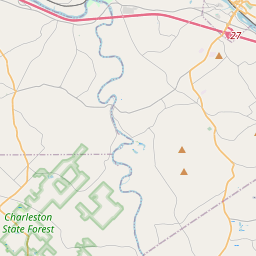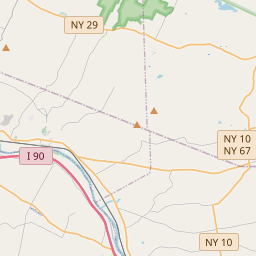Schoharie Crossing
Historical marker location:
Fort Hunter, New York
( Marker is at the intersection of Main Street (County Route 27) and Schocharie Street, on the right when traveling south on Main Street.)













© OpenStreetMap contributors
State Historic Site
Loading...
Searching for other points of interest within 3 miles of this location.The first woman to vote in a United States presidential election was a resident of Rochester, New York named Susan B. Anthony. She cast her ballot in the 1872 election, for which she was arrested and fined.
About Montgomery County
Montgomery County Timeline
Montgomery County, located in upstate New York, has a rich and diverse history that spans hundreds of years. The area was originally inhabited by Native American tribes, including the Mohawk and the Iroquois Confederacy. European colonists arrived in the 17th century, establishing trade relationships and settlements with the Native Americans.
The county was officially established in 1772 and named after General Richard Montgomery, a hero of the American Revolutionary War. During the war, the area played a significant role as a military supply hub and battleground. Notably, the Battle of Oriskany in 1777 was a pivotal encounter in which American forces fought British loyalists and Native American allies.
In the early 19th century, Montgomery County experienced a boom in industrialization and commerce. The Erie Canal, completed in 1825, passed through the county, bringing increased trade and prosperity. Factories and mills sprang up along the canal, harnessing its power for manufacturing and contributing to the county's economic growth.
Throughout the 20th century, Montgomery County faced various challenges and changes. Deindustrialization and the decline of manufacturing industries led to economic struggles. However, efforts to diversify the economy were undertaken, with tourism and agriculture becoming increasingly important sectors. Today, the county continues to grow and adapt, preserving its heritage while embracing new opportunities for development and prosperity.
The county was officially established in 1772 and named after General Richard Montgomery, a hero of the American Revolutionary War. During the war, the area played a significant role as a military supply hub and battleground. Notably, the Battle of Oriskany in 1777 was a pivotal encounter in which American forces fought British loyalists and Native American allies.
In the early 19th century, Montgomery County experienced a boom in industrialization and commerce. The Erie Canal, completed in 1825, passed through the county, bringing increased trade and prosperity. Factories and mills sprang up along the canal, harnessing its power for manufacturing and contributing to the county's economic growth.
Throughout the 20th century, Montgomery County faced various challenges and changes. Deindustrialization and the decline of manufacturing industries led to economic struggles. However, efforts to diversify the economy were undertaken, with tourism and agriculture becoming increasingly important sectors. Today, the county continues to grow and adapt, preserving its heritage while embracing new opportunities for development and prosperity.
Montgomery County Timeline
This timeline provides a concise overview of the key events in the history of Montgomery County, New York.
- 1772 - Montgomery County is established as a county in the state of New York.
- 1776 - The American Revolutionary War begins, and Montgomery County becomes an important area for military operations.
- 1784 - The county seat is established in the village of Johnstown.
- 1793 - The Erie Canal is constructed, providing a major transportation route through Montgomery County.
- 1803 - The village of Amsterdam is incorporated.
- 1838 - The Montgomery County Courthouse in Johnstown is destroyed by fire.
- 1855 - The Fonda, Johnstown, and Gloversville Railroad is completed, improving transportation in the county.
- 1869 - The Beech-Nut packing company is founded in Canajoharie.
- 1960 - The construction of the New York State Thruway begins, connecting Montgomery County to the rest of the state.
- 1974 - The county's population reaches its peak at over 100,000 residents.
- 2020 - Today, Montgomery County is a rural area known for its historical attractions and natural beauty.